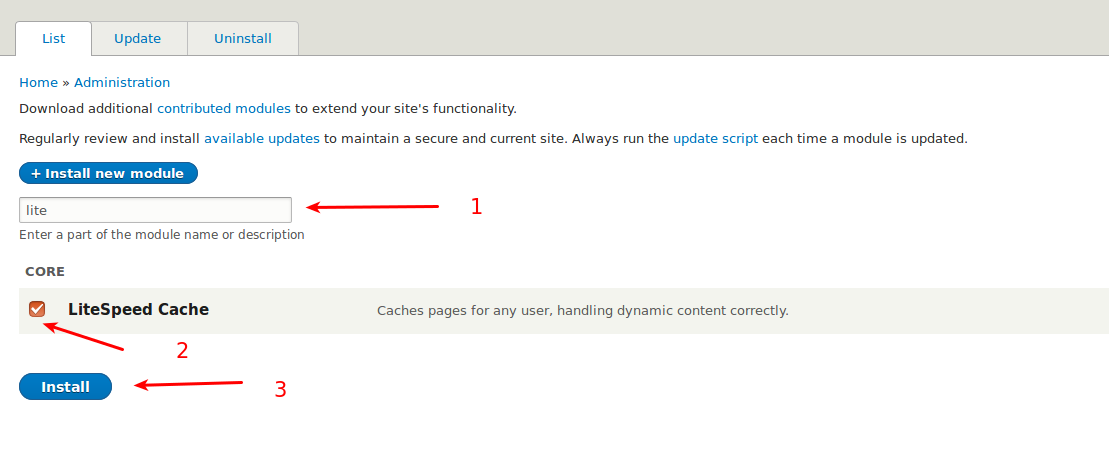Drupal 8 is significantly changed from Drupal 7. They have converted from procedural programming to object-oriented programming. Drupal 8 has a built-in page cache (for static content) and a dynamic page cache for logged in users. The latter basically works as a reverse proxy written in PHP. The built-in proxy is good if you have no other options, however, with the LiteSpeed Cache plugin you will see a great improvement in performance for your Drupal 8 site.
See https://www.litespeedtech.com/products/cache-plugins for more information.
This version of LiteSpeed Cache requires Drupal 8.xx or later and LiteSpeed Web Server (LSWS) 5.2.3 or later.
Download LiteSpeed Cache Module to your local computer from:
https://github.com/litespeedtech/lscache-drupal/archive/master.zip
<IfModule LiteSpeed>
CacheLookup on
</IfModule>
Once you have downloaded the plugin, you can install by visiting:
http://example.com/admin/modules/install
Using the browse button you can upload the plugin you just downloaded and start the installation. Once installed, enable the plugin by going to:
http://example.com/drupal/admin/modules
- Use the search box to search for a module.
- Check the checkbox next to LiteSpeed Cache.
- Click Install.
This step is optional. Once the plugin is activated, your cache is already up and running, but on the configuration screen, you can customize few settings.
Go to
http://example.com/admin/config/development/lscache
Clear Cache
- Clear this site
This option only clears the current Drupal installation. This helps if you have multiple Drupal installations on the same virtual host.
- Clear all
This button clears the entire LiteSpeed cache for this virtual host. This includes any other web apps using LSCache (WordPress, XenForo, etc.) on this vhost.
Debug
If turned on, LiteSpeed Cache will emit extra headers for testing while developing or deploying.
Public Cache TTL
Amount of time LiteSpeed web server will save pages in the public cache.

